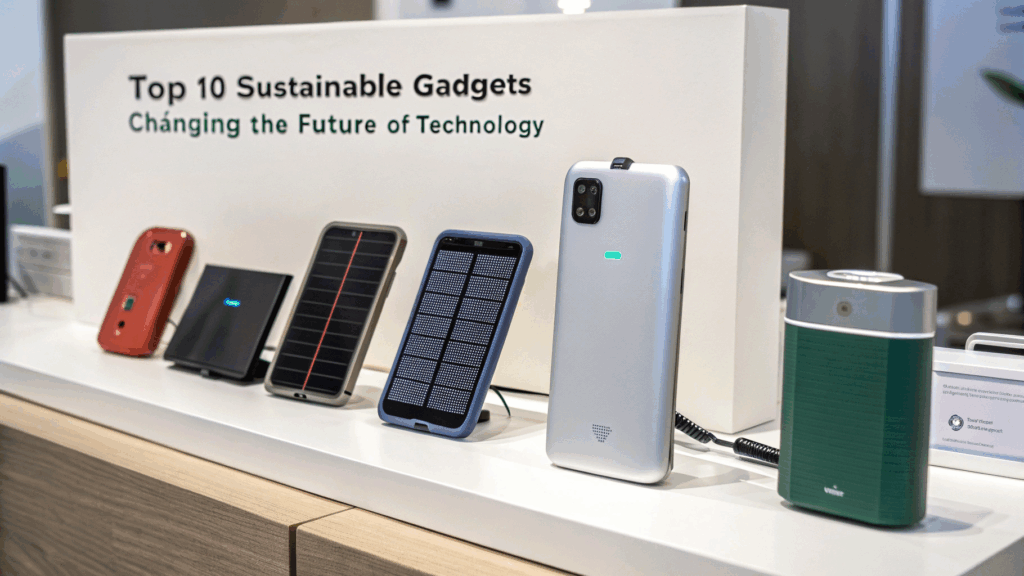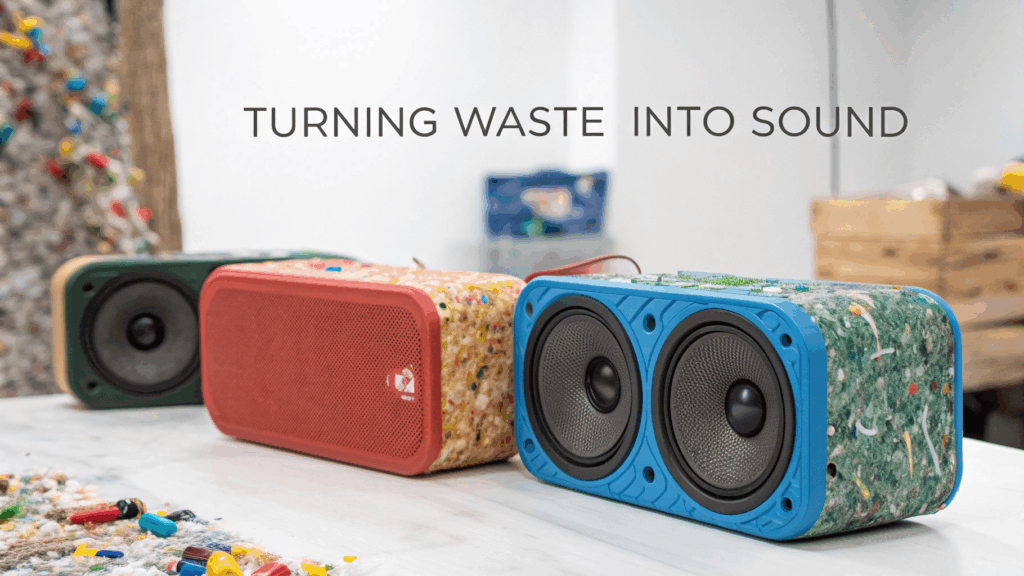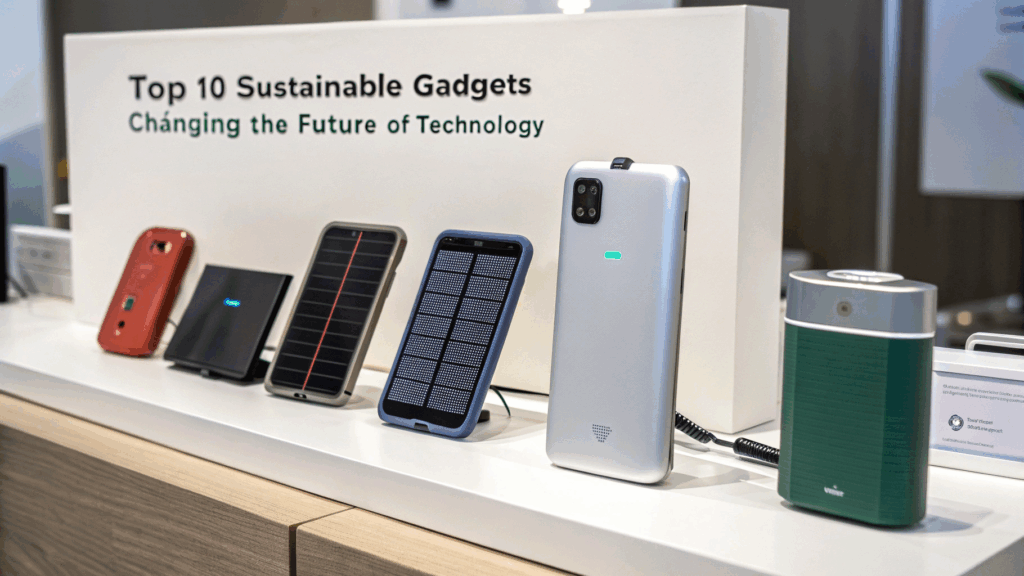Top 10 Sustainable Gadgets Changing the Future of Tech
In recent years, the call for sustainability has become impossible to ignore. As climate change accelerates and natural resources deplete, the technology sector has been under increasing pressure to innovate responsibly. Traditional gadgets often involve materials and manufacturing processes that generate significant environmental damage, from mining rare metals to creating electronic waste that fills landfills.

Fortunately, a new wave of sustainable gadgets is emerging, combining advanced technology with eco-friendly materials and designs aimed at reducing environmental impact. These devices not only promote greener consumption but also inspire a shift toward a circular economy—where resources are reused, energy is conserved, and waste is minimized.
This article explores the top 10 sustainable gadgets that are shaping the future of technology by redefining how we use, produce, and dispose of our everyday electronics.
1. Solar-Powered Phone Chargers: Empowering Clean Energy on the Go
With smartphones becoming indispensable, the demand for charging options is ever-growing. Solar-powered phone chargers offer a clean alternative to traditional electricity sources, harnessing the sun’s energy to recharge devices anywhere.
How It Works
These chargers contain photovoltaic cells that convert sunlight into electricity. Users can place them in direct sunlight, and the stored energy can then power their phones, tablets, or other small electronics.
Environmental Impact
By eliminating the need for grid electricity—often generated by fossil fuels—solar chargers reduce carbon emissions significantly. Furthermore, they reduce dependency on disposable batteries and power banks that require frequent charging and eventual disposal.
Popular Examples
- Anker PowerPort Solar Lite: Lightweight and portable with fast charging capability.
- BigBlue 28W Solar Charger: Known for efficiency and multiple USB ports.
Why It Matters
Solar chargers promote renewable energy use at the consumer level, encouraging sustainable habits and reducing the carbon footprint of everyday tech use.
2. Bamboo Keyboard and Mouse Sets: Bringing Nature to Your Desk
Plastics dominate the manufacturing of computer accessories, contributing to pollution and slow decomposition. Bamboo offers a sustainable alternative: it’s fast-growing, biodegradable, and requires fewer chemicals to process.
Benefits of Bamboo
- Rapid renewability: Bamboo can grow up to 3 feet in 24 hours.
- Biodegradable: Unlike plastics, bamboo breaks down naturally in the environment.
- Aesthetic appeal: Bamboo accessories provide a unique, natural look that’s gaining popularity.
Environmental Advantages
Using bamboo reduces reliance on petroleum-based plastics, decreases landfill waste, and lowers the overall carbon footprint of tech accessories.
Leading Brands
- Bamboo Gear: Offers a complete set of keyboard and mouse combos.
- Logitech’s Bamboo Line: Incorporates bamboo elements into their eco-friendly designs.
3. Recycled Plastic Bluetooth Speakers: Turning Waste into Sound

Ocean pollution and plastic waste are among the biggest environmental challenges. Some companies have turned this problem into an opportunity by crafting Bluetooth speakers from recycled plastics, especially those retrieved from oceans.
How It Helps
- Reduces plastic waste: Prevents tons of plastic from entering oceans and landfills.
- Promotes circular economy: Reuses materials instead of relying on virgin plastics.
- Energy savings: Manufacturing with recycled plastic requires less energy compared to new plastic production.
Features
These speakers deliver high-quality sound comparable to traditional speakers, while also serving as a statement for environmental responsibility.
Notable Models
- House of Marley: Known for sustainable materials and ethical production.
- JBL’s Ocean Plastic Speaker: Incorporates ocean plastics into its casing.
4. Energy-Efficient Smart Thermostats: Smart Savings for the Planet
Heating and cooling account for nearly half of home energy use globally. Smart thermostats reduce waste by learning user habits and optimizing temperature controls.
How They Work
Using sensors and machine learning, these devices adjust heating/cooling based on when people are home or asleep, reducing unnecessary energy consumption.
Environmental Benefits
- Cuts greenhouse gas emissions: Less energy used means fewer emissions from power plants.
- Saves money: Reduced energy bills incentivize sustainable behavior.
- Remote control: Allows users to monitor and adjust settings on the go.
Popular Options
- Nest Learning Thermostat: One of the pioneers with a strong focus on sustainability.
- Ecobee SmartThermostat: Includes features like occupancy detection to enhance efficiency.
5. Solar-Powered Outdoor Lights: Illuminating Green Spaces Naturally
Outdoor lighting is often overlooked in sustainability efforts, but it can be a significant energy drain. Solar-powered lights use sunlight collected during the day to power LED bulbs at night.
Benefits
- No wiring needed: Easy to install, especially in remote or off-grid areas.
- Zero electricity costs: Runs entirely on renewable energy.
- Durability: LEDs have long lifespans, reducing replacement frequency.
Applications
- Garden paths, patios, driveways, and decorative lighting are ideal for solar options.
Popular Products
- LITOM Solar Lights: Known for bright illumination and weather resistance.
- URPOWER Solar Lights: Affordable and highly rated by users.
6. Eco-Friendly Wireless Earbuds: Small Devices with Big Impact
Wireless earbuds are ubiquitous, but many contribute to electronic waste due to their short lifespan and non-recyclable parts. Eco-friendly earbuds use recycled materials and modular designs to ease repair and recycling.
Key Features
- Recycled materials: Cases and earbuds often use recycled plastics or metals.
- Modular parts: Allows users to replace batteries or components rather than discarding entire units.
- Energy-efficient Bluetooth: Prolongs battery life and reduces charging frequency.
Leading Innovators
- Urbanista Seattle: Uses recycled plastic and promotes responsible manufacturing.
- House of Marley Positive Vibration: Emphasizes natural materials and fair trade.
7. Hand-Cranked Flashlights and Radios: Off-Grid and Waste-Free Power

In emergencies or outdoor adventures, access to power can be limited. Hand-cranked gadgets generate energy manually, eliminating the need for disposable batteries or electricity.
How They Work
Users turn a crank that spins a small generator inside the device, producing electricity stored in an internal battery or capacitor.
Benefits
- No batteries required: Reduces hazardous battery waste.
- Reliable: Always ready, no charging infrastructure needed.
- Durable: Built to last through harsh conditions.
Use Cases
- Emergency kits, camping, hiking, or any off-grid situation.
Recommended Devices
- Energizer LED Hand Crank Flashlight: Compact and efficient.
- RunningSnail Emergency Hand Crank Radio: Combines light, radio, and phone charger.
8. Solar-Powered Backpacks: Charging on the Move
Solar backpacks integrate flexible solar panels into their fabric, allowing users to charge phones, tablets, and other devices while walking or commuting.
Advantages
- Convenient charging: No need to find outlets while on the go.
- Promotes renewable energy: Encourages use of clean energy daily.
- Eco-conscious design: Often made with recycled or sustainable materials.
Popular Models
- Voltaic Systems Solar Backpack: Durable and designed for heavy use.
- Sunnybag Solar Backpack: Lightweight and stylish.
9. Eco-Friendly Smartwatches: Sustainable Wearable Tech

Smartwatches have become everyday essentials, but many contain toxic components and non-recyclable materials. Eco-friendly smartwatches address this by using recycled metals, biodegradable straps, and energy-saving displays.
Environmental Innovations
- Recycled aluminum and stainless steel cases
- Vegan leather or plant-based straps
- Low-energy OLED or e-ink displays
Benefits
- Encourages users to adopt healthy lifestyles with minimal environmental impact.
- Promotes circular design principles for future electronics.
Noteworthy Brands
- Garmin Lily: Incorporates sustainable materials and efficient battery use.
- Withings Move Eco: Combines analog design with sustainability.
10. Biodegradable Phone Cases: Protect Your Phone and the Planet
Traditional phone cases are typically made of plastic, which takes hundreds of years to degrade. Biodegradable cases use plant-based or compostable materials to protect phones while minimizing landfill waste.
Materials Used
- Plant fibers like bamboo, wheat straw, or sugarcane.
- Bioplastics derived from renewable resources.
Advantages
- Break down naturally: Return to the soil without harmful residues.
- Stylish and functional: Available in various colors and designs.
- Reduce microplastic pollution: Unlike conventional plastic cases.
Brands to Watch
- Pela Case: Certified compostable and plant-based materials.
- Wilds Cases: Handmade using biodegradable materials.
Why Sustainable Gadgets Matter
Addressing E-Waste
Electronic waste is one of the fastest-growing waste streams globally, with over 50 million tons generated annually. Sustainable gadgets reduce e-waste by emphasizing durability, repairability, and recyclability.
Reducing Carbon Footprint
Energy-efficient designs and renewable power sources minimize the carbon emissions linked to gadget use.
Encouraging Ethical Consumption
Choosing sustainable tech supports companies that prioritize fair labor, environmentally safe production, and responsible sourcing.
How Consumers Can Support Sustainable Tech
- Research Before Buying: Look for certifications like Energy Star, EPEAT, or fair trade labels.
- Buy Durable, Repairable Gadgets: Longevity reduces the need for replacements.
- Recycle Properly: Use e-waste recycling programs to dispose of old devices.
- Support Companies with Transparency: Favor brands committed to sustainability goals.
Final Thoughts
The integration of sustainability into technology is no longer optional—it’s essential for the health of our planet and future generations. The top 10 sustainable gadgets outlined above illustrate how innovation and responsibility can coexist beautifully.
From solar-powered chargers that tap into infinite energy to biodegradable phone cases that vanish harmlessly in nature, these gadgets showcase a future where technology enhances life without costing the earth.
As consumers, embracing these sustainable options sends a powerful message to the tech industry and encourages continuous innovation toward a greener, smarter world.

